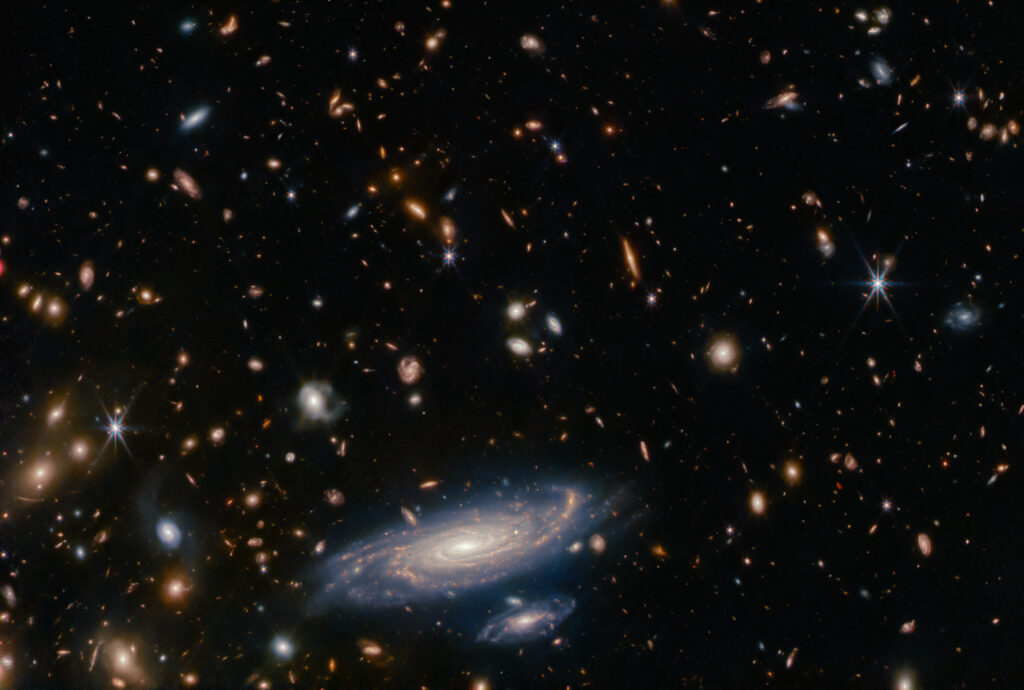Astronomers have published a new image obtained by the James Webb Space Telescope (JWST). It captures a spiral galaxy located at a distance of a billion light-years from Earth.

One of the main goals of JWST is to study the processes of formation and evolution of galaxies. Astronomers use the telescope as a kind of time machine that allows them to look billions of years into the past and literally see the “star islands” located at the edge of the visible Universe. Next, they compare them with modern galaxies. This allows scientists to better understand exactly how their development has taken place. JWST also conducts chemical analysis of galaxies, which allows them to shed light on the history of the synthesis of various heavy elements that created the conditions for the formation of exoplanets.
The image made by JWST shows a variety of galaxies of various shapes — from the usual spirals to elliptical and irregular galaxies. The lower part of the image is dominated by LEDA 2046648. This is a spiral galaxy that is located at a distance of a billion light-years from Earth in the direction of the constellation Hercules. The photo also includes the stars of our Milky Way. They can be identified due to the presence of diffraction rays.
The photo was taken as part of the calibration process of the NIRISS spectrograph. It is designed to obtain images in the near infrared range and can be used both for studying galaxies and for searching for exoplanets and conducting their transit spectroscopy.
Recall that recently NIRISS suspended observations due to a software failure.
According to https://esawebb.org
Follow us on Twitter to get the most interesting space news in time
https://twitter.com/ust_magazine

